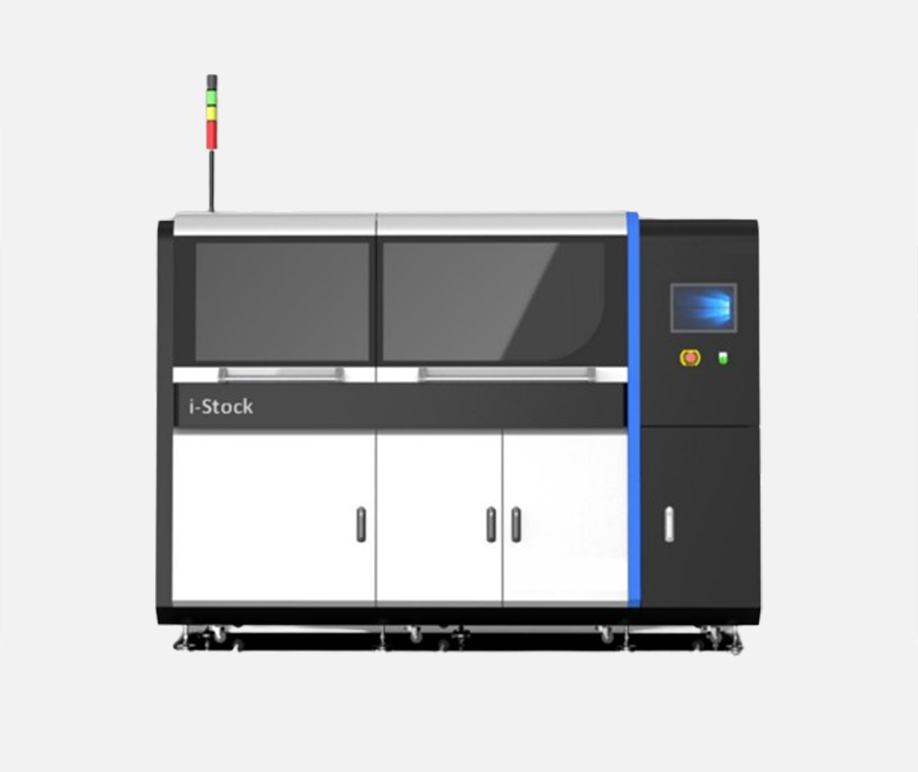
|
item |
argument |
|
Model number |
i-Stock-L-P |
|
External dimension |
Length 2050mm* Width 880mm* height 1720mm |
|
Material type |
7”8mm~13”24mm |
|
Operation time |
8~14 seconds/disc |
|
Feed mode |
Cache 100 disks (50 disks *2 cache carts, optionally add cache carts) |
|
Industrial computer |
Advantech AIMB-501G2(Intel i5-2400/4G/500GB) |
|
Air pressure requirement |
0.6~0.8Mpa |
|
Power source |
1ψ 220V 50Hz |
|
Visual identification module |
1. Identification principle: The Reel ID barcode is generated by identifying the specified barcode
2. Automatically compare the generated bar code |
|
Electrostatic protection |
1. Anti-static material storage, surface resistance value106-1011Ω 2. The external structure of the device is grounded. The power supply of the device is grounded<1Ω |

The equipment can complete the tasks of labeling and load shifting independently, without manual intervention, and improve production efficiency.

Robots can complete tasks quickly and accurately, work all day long, continuously and without interruption, and improve production efficiency.

The device can flexibly adjust working paths and tasks to adapt to different production scenarios, improving production flexibility and adaptability.

Equipped with safety sensors to ensure safety during production and reduce the risk of accidents.

Reduce labor costs, reduce error rate, improve production efficiency and reduce production costs.

The equipment can be integrated with other equipment to realize the automation and intelligence of the production process, improving the overall production efficiency and flexibility.